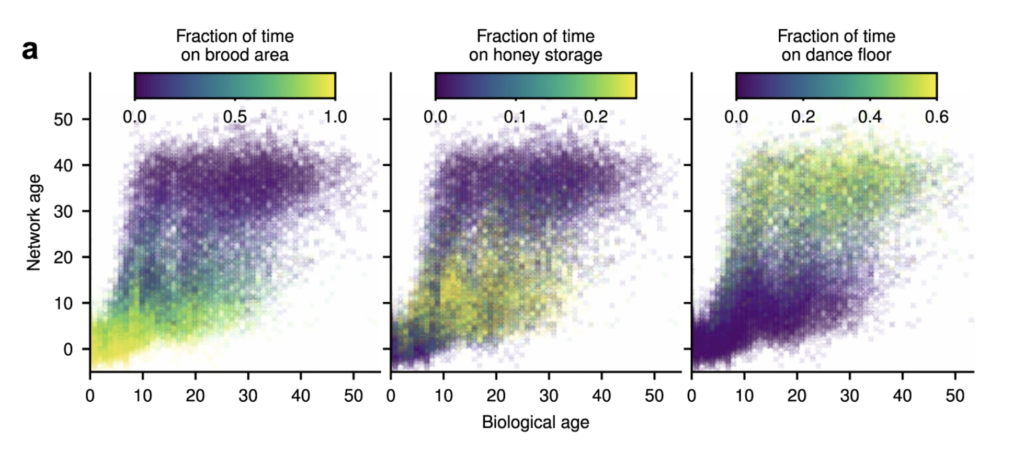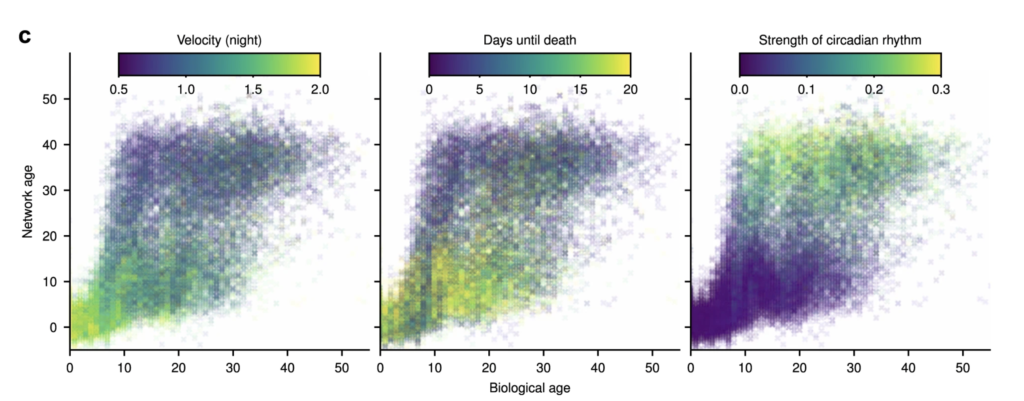Introduction
As the leaves change colour and the weather cools, I like to think back and remember that just a few months ago it was summer. As someone who picked up gardening as a hobby during the pandemic, summer is a time for life and growth. I found it fascinating that from a tiny little seed planted in the earth, could emerge a plant that could be used to nourish yourself. However, we forget that much of the food that we grow is a result of the hard work of pollinators like bees. Bees are a crucial part of our ecosystems, and many of us never take the time to consider the contribution that they have on society. For this blog post, I would like to discuss an article that I have found that uses network science to delve into the complex social interactions of bees.
Background
Bees are interesting insects because, much like ants and termites (albeit much cuter), they are incredibly social insects. Bees engage in food sharing, dances, and chemical pheromones to communicate with one another. To maintain the survival of the colony, bees are allocated tasks, and this allocation has been observed to be associated with the age of the worker bee. Younger bees typically care for the brood (baby bees), and older bees venture outside to forage for food. However, it has also been hypothesized that task allocation is a result of social interactions. Small biological and ecological factors create differences between how individuals bees mature and age creating discrepancies between biological age and task allocation. Researchers were interested in understanding how tasks are allocated in honey bees to gain a greater understanding of how their complex social system functions.
Data Collection & Analysis
Researchers marked, filmed, and tracked an entire colony of honey bees over a long period of time to investigate how tasks were allocated to individual bees. Researchers continually filmed bees for 25 days, and using tracking software, were able to create tens of social interaction networks between roughly 2,000 bees. Examples of some of these networks are listed in the following section.
Social Networks
Proximity Interaction Network
These were networks that counted the number of times two bees were in proximity of each other. Proximity being defined as two bees that were within 2cm of each other for over 0.9 seconds.
Euclidean Proximity Networks
These networks were the daily average distance between two individual bees transformed into affinity networks.
Time-Aggregated Networks and Post-processing
Time-Aggregated networks defined their weighted undirected edges as the number of time two bees participated in food-exchange. This was represented as an adjacency matrix where the ith, jth entry represented the normalized affinity between bee i and j on a given day.
Analysis
Researchers aggregated the daily networks and used spectral decomposition ( time-frequency decomposition ) to group bees that had similar interaction patterns together. Afterwards, applied canonical-correlation analysis (CCA) to correlate the fraction of time that these bees spent in a certain part of the hive, and compressed this value into a single number called “network age”. This is because tasks are also spatially separated in the hive, so the amount of time a bee spent in a particular location gives us insight about what tasks they are allocated. The entire process can be summarized with the following graphic:

Conclusion
Researchers found that network age is actually a very good indicator of task allocation in honey bees. As pictured in the figure below, it is evident that there is a correlation between network age of a bee, and the time it spent in an area of the hive designated for specific tasks. As we can see clear classes based on network age in the graphic below:

Furthermore, researchers also found that network age is a great predictor of other biological factors such as the strength of circadian rhythm and mortality probability of individual bees. And in some cases, network age is actually a better predictor for bee behaviour than biological age.


In conclusion, these researchers have successfully used network science, to capture and model the complex interactions of an entire bee colony. They used these network models to calculate a numerical indicator that can accurately model and predict the behaviour of bees based off their social interactions with one another, which has long been hypothesized to play a crucial part in how their complex society functions. I find this to be pretty interesting. Something as simple as an individual bee, is really just one node in in a very complex social network. This study has shown that network science can be applied to get a better understanding of the complex natural phenomena that we take for granted.
References:
Wild, B., Dormagen, D.M., Zachariae, A. et al. Social networks predict the life and death of honey bees. Nat Commun 12, 1110 (2021). https://doi.org/10.1038/s41467-021-21212-5. https://doi.org/10.1038/s41467-021-21212-5
https://wiki.seg.org/wiki/Spectral_decomposition#Visualization
2 replies on “Using Network Science to Understand the Life of Bees: Predicting Work, Life, and Death”
It’s fascinated how the network science is also applicable to a biological network like bees. The social structure of a bee colony is a great model of network, and its sophistication is beyond human imagination.
It would be interesting to see the data play out for more than 25 days. However, based on the findings it definitely shows evidence of a network where many findings can be extrapolated.
I expect that a similar approach can also be applied to other eusocial creatures such as ants and termites.